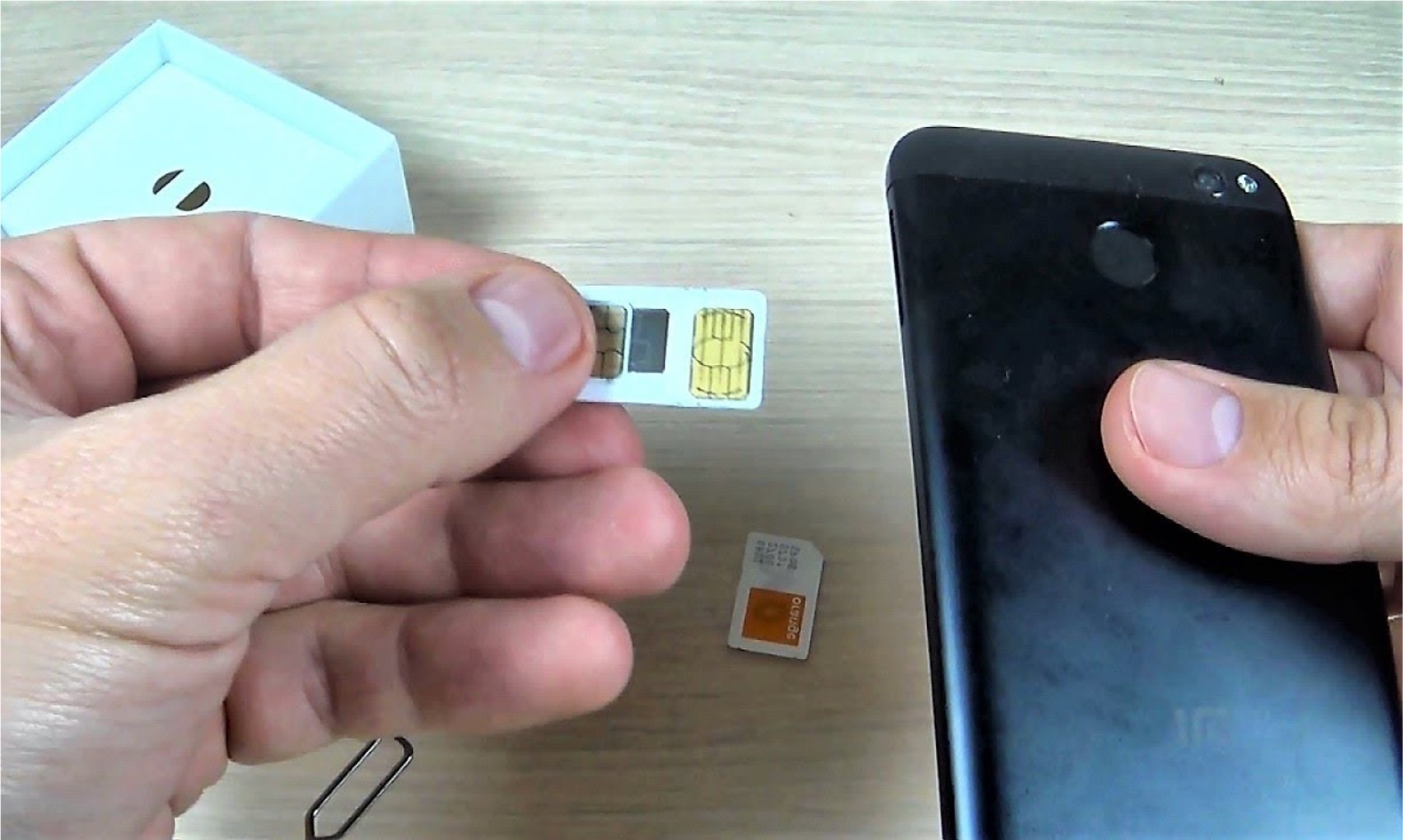Introduction
Mobile devices have become an integral part of our daily lives, offering convenience, connectivity, and entertainment at our fingertips. One of the key features that enhance user experience is the auto screen rotation function, allowing seamless transition between portrait and landscape modes based on the device's orientation. However, encountering issues with auto screen rotation can be frustrating and disruptive to the user experience.
In this article, we will delve into the common auto screen rotation issues experienced by Redmi 4X users and provide comprehensive troubleshooting steps to resolve these issues effectively. Whether you use your Redmi 4X for work, entertainment, or staying connected with loved ones, a smooth auto screen rotation function is essential for a seamless and enjoyable mobile experience.
Understanding the root causes of auto screen rotation issues and learning how to troubleshoot and resolve them will empower you to make the most of your Redmi 4X's capabilities. Let's embark on this journey to uncover the solutions that will restore the smooth and effortless auto screen rotation functionality to your device.
Understanding Auto Screen Rotation Issues
Auto screen rotation issues can manifest in various ways, causing inconvenience and disrupting the seamless user experience on the Redmi 4X. Understanding the underlying factors contributing to these issues is crucial in effectively troubleshooting and resolving them. Here are some common scenarios that users may encounter:
-
Unresponsiveness: One of the prevalent issues is the unresponsiveness of the auto screen rotation feature. Despite changes in the device's orientation, the screen remains fixed in either portrait or landscape mode, failing to adapt accordingly.
-
Inconsistent Rotation: Users may experience erratic behavior in the auto screen rotation, where the display switches between portrait and landscape modes unpredictably, without aligning with the device's orientation.
-
Delayed Rotation: Another common issue is the delayed response of the auto screen rotation feature. When the device is rotated, there is a noticeable lag before the screen orientation adjusts, leading to a disjointed user experience.
-
Orientation Lock Malfunction: The orientation lock function, designed to restrict auto rotation in certain scenarios, may malfunction, causing the screen to remain fixed in a single orientation regardless of the device's position.
-
Sensor Calibration Errors: Auto screen rotation relies on the accurate calibration of internal sensors, such as the accelerometer and gyroscope. Calibration errors can lead to inaccuracies in detecting the device's orientation, resulting in flawed screen rotation behavior.
Understanding these auto screen rotation issues is the first step toward effectively addressing them. By recognizing the specific symptoms and behaviors exhibited by the Redmi 4X, users can proceed to troubleshoot and implement targeted solutions to restore the seamless functionality of the auto screen rotation feature.
Troubleshooting Auto Screen Rotation Issues
Troubleshooting auto screen rotation issues on your Redmi 4X involves a systematic approach to identify and address the underlying causes of the malfunctioning feature. By following these comprehensive steps, you can effectively diagnose and resolve the issues affecting the auto screen rotation functionality, restoring a seamless and responsive experience on your device.
-
Restart Your Device: Begin the troubleshooting process by restarting your Redmi 4X. A simple reboot can often resolve temporary software glitches that may be affecting the auto screen rotation feature. After restarting, test the auto rotation functionality to determine if the issue persists.
-
Check Orientation Settings: Navigate to the device settings and verify the orientation settings for auto screen rotation. Ensure that the feature is enabled and that no specific apps or system settings are restricting the screen orientation. Adjust the settings as needed and test the auto rotation functionality.
-
Calibrate Sensors: Calibration errors in the internal sensors can lead to inaccurate auto screen rotation. Access the device's sensor calibration settings and perform a recalibration process to ensure the accelerometer and gyroscope are accurately detecting the device's orientation. Follow the on-screen instructions to complete the calibration process.
-
Update System Software: Ensure that your Redmi 4X is running the latest software version. System updates often include bug fixes and improvements that can address issues related to auto screen rotation. Check for available updates in the device settings and install any pending software updates.
-
Safe Mode Assessment: Boot your device into safe mode to assess if third-party apps are interfering with the auto rotation feature. In safe mode, only pre-installed system apps are active, allowing you to determine if a third-party app is causing the issue. If auto rotation works correctly in safe mode, consider uninstalling recently installed apps that may be conflicting with the feature.
-
Factory Reset Consideration: If the auto screen rotation issues persist despite troubleshooting steps, consider performing a factory reset as a last resort. A factory reset will restore the device to its original state, eliminating potential software conflicts. Remember to back up your important data before proceeding with a factory reset.
By systematically troubleshooting the auto screen rotation issues on your Redmi 4X, you can identify and address the root causes of the malfunctioning feature. These proactive steps empower you to restore the seamless and responsive auto rotation functionality, ensuring a satisfying user experience on your device.
Resolving Auto Screen Rotation Issues
Resolving auto screen rotation issues on your Redmi 4X involves implementing targeted solutions to address the specific factors contributing to the malfunctioning feature. By applying the following strategies, you can effectively restore the seamless and responsive auto rotation functionality, ensuring a satisfying user experience on your device.
1. Software Updates and Patches
Keeping your Redmi 4X's operating system up to date is crucial for resolving auto screen rotation issues. Manufacturers often release software updates and patches to address known bugs and optimize device functionality. Check for available system updates in the device settings and install any pending updates to ensure that your device is running the latest software version. These updates may include fixes that specifically target auto rotation issues, providing a straightforward resolution to the problem.
2. Sensor Calibration
The accurate calibration of internal sensors, including the accelerometer and gyroscope, is essential for reliable auto screen rotation. Access the sensor calibration settings on your device and perform a recalibration process to ensure that the sensors accurately detect the device's orientation. Follow the on-screen instructions to complete the calibration, which can significantly improve the precision and responsiveness of the auto rotation feature.
3. App Compatibility and Optimization
Certain third-party apps may inadvertently interfere with the auto rotation functionality on the Redmi 4X. Consider reviewing recently installed apps and their compatibility with the device's screen orientation features. Additionally, optimizing app settings and permissions related to screen rotation can mitigate potential conflicts and ensure smooth operation. By identifying and addressing app-related issues, you can enhance the overall stability of the auto rotation feature.
4. Orientation Lock Management
The orientation lock function, designed to restrict auto rotation in specific scenarios, may contribute to the perceived malfunction of the feature. Verify the orientation lock settings on your device and ensure that they align with your usage preferences. Adjust the orientation lock as needed, and test the auto rotation functionality to confirm that the feature operates as intended based on your device's orientation.
5. Professional Support and Service
If persistent auto screen rotation issues persist despite troubleshooting efforts, consider seeking professional support from authorized service centers or technical experts. These professionals can conduct in-depth diagnostics and assessments to identify underlying hardware or software issues that may be affecting the auto rotation feature. Depending on the findings, they can provide targeted solutions or repairs to restore the functionality of your Redmi 4X's auto screen rotation.
By implementing these targeted strategies, you can effectively address and resolve auto screen rotation issues on your Redmi 4X, ensuring a seamless and responsive user experience. Whether through software optimizations, sensor recalibration, app management, or professional support, restoring the functionality of the auto rotation feature enhances the overall usability and enjoyment of your device.
Conclusion
In conclusion, addressing auto screen rotation issues on your Redmi 4X is essential for restoring a seamless and responsive user experience. By understanding the common manifestations of these issues and systematically troubleshooting and resolving them, you can reclaim the full functionality of the auto rotation feature on your device.
Throughout this journey, we've explored the various factors that can contribute to auto screen rotation issues, including unresponsiveness, inconsistent behavior, delayed rotation, orientation lock malfunctions, and sensor calibration errors. By recognizing these specific challenges, users can effectively identify and address the root causes of the malfunctioning feature.
The troubleshooting process outlined in this article provides a comprehensive framework for diagnosing and resolving auto screen rotation issues. From restarting the device and checking orientation settings to calibrating sensors, updating system software, and considering safe mode assessments and factory resets, users have a range of proactive steps to address the issues affecting the auto rotation feature.
Furthermore, the targeted strategies for resolving auto screen rotation issues, including software updates and patches, sensor calibration, app compatibility and optimization, orientation lock management, and professional support and service, offer users a diverse set of solutions to restore the seamless functionality of the feature.
By implementing these strategies, users can effectively address and resolve auto screen rotation issues on their Redmi 4X, ensuring a satisfying and uninterrupted user experience. Whether through software optimizations, sensor recalibration, app management, or seeking professional support, restoring the functionality of the auto rotation feature enhances the overall usability and enjoyment of the device.
Ultimately, by leveraging the insights and solutions provided in this article, Redmi 4X users can overcome auto screen rotation issues and enjoy a seamless and responsive user experience, unlocking the full potential of their mobile device for work, entertainment, and communication.
In conclusion, the journey to resolving auto screen rotation issues empowers users to optimize their Redmi 4X's functionality, ensuring that the device seamlessly adapts to their needs and preferences, enhancing their overall mobile experience.

























